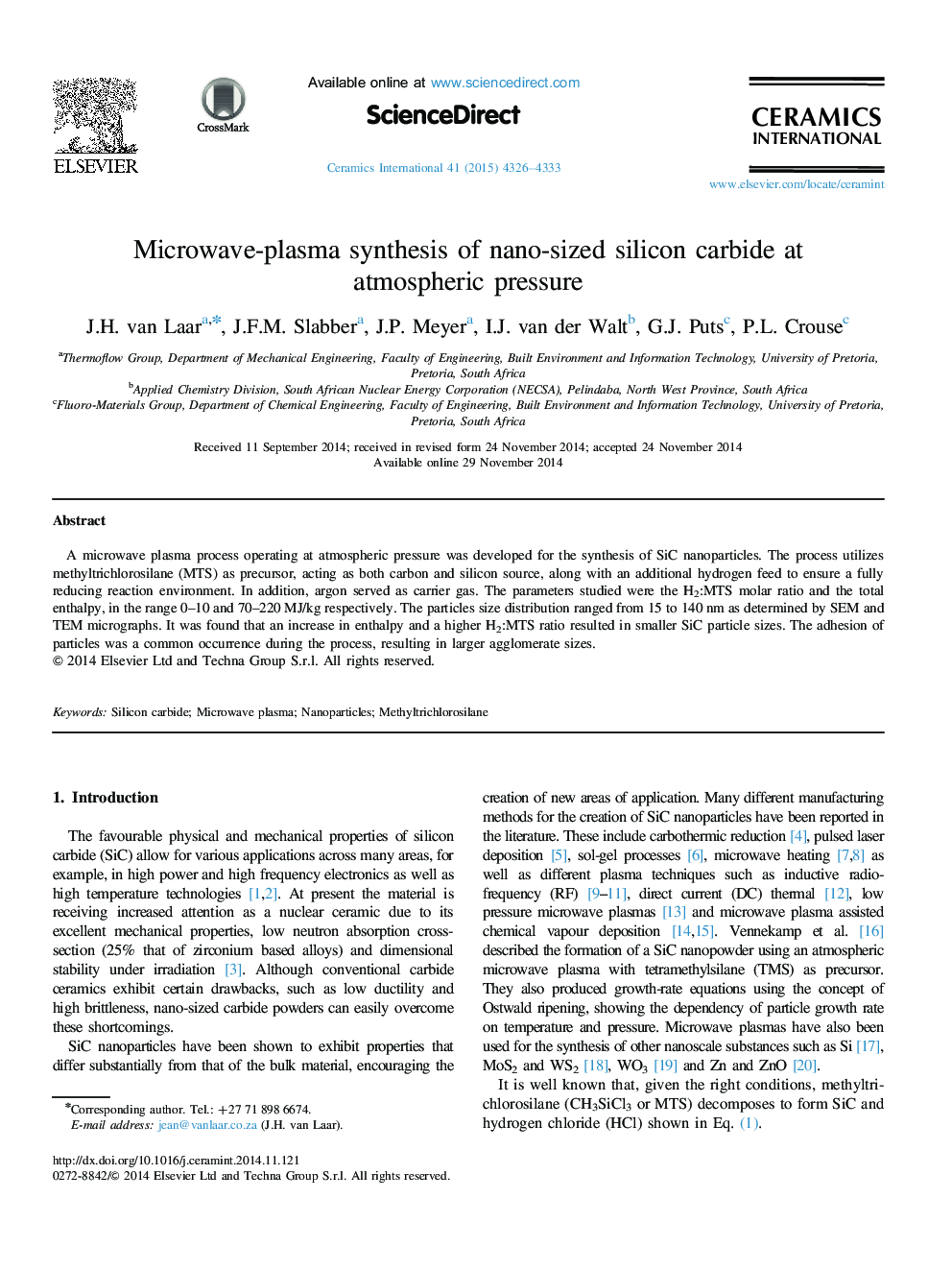| Article ID | Journal | Published Year | Pages | File Type |
|---|---|---|---|---|
| 1460301 | Ceramics International | 2015 | 8 Pages |
A microwave plasma process operating at atmospheric pressure was developed for the synthesis of SiC nanoparticles. The process utilizes methyltrichlorosilane (MTS) as precursor, acting as both carbon and silicon source, along with an additional hydrogen feed to ensure a fully reducing reaction environment. In addition, argon served as carrier gas. The parameters studied were the H2:MTS molar ratio and the total enthalpy, in the range 0–10 and 70–220 MJ/kg respectively. The particles size distribution ranged from 15 to 140 nm as determined by SEM and TEM micrographs. It was found that an increase in enthalpy and a higher H2:MTS ratio resulted in smaller SiC particle sizes. The adhesion of particles was a common occurrence during the process, resulting in larger agglomerate sizes.
